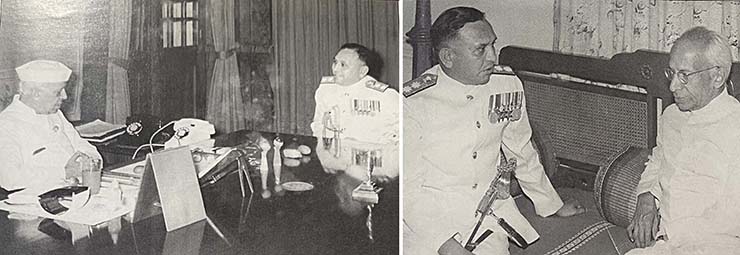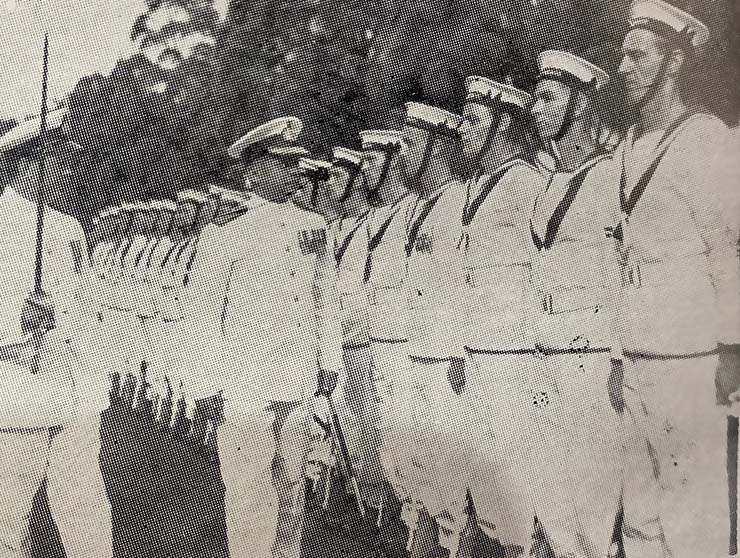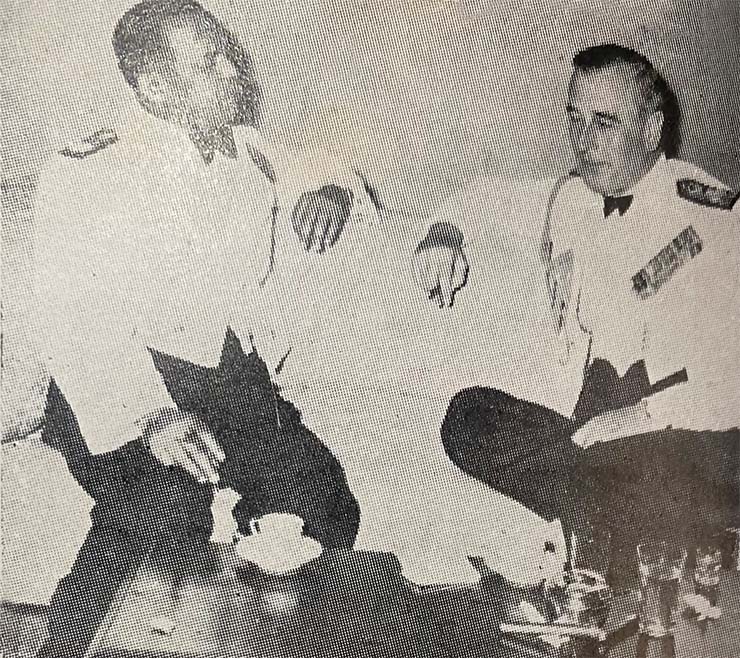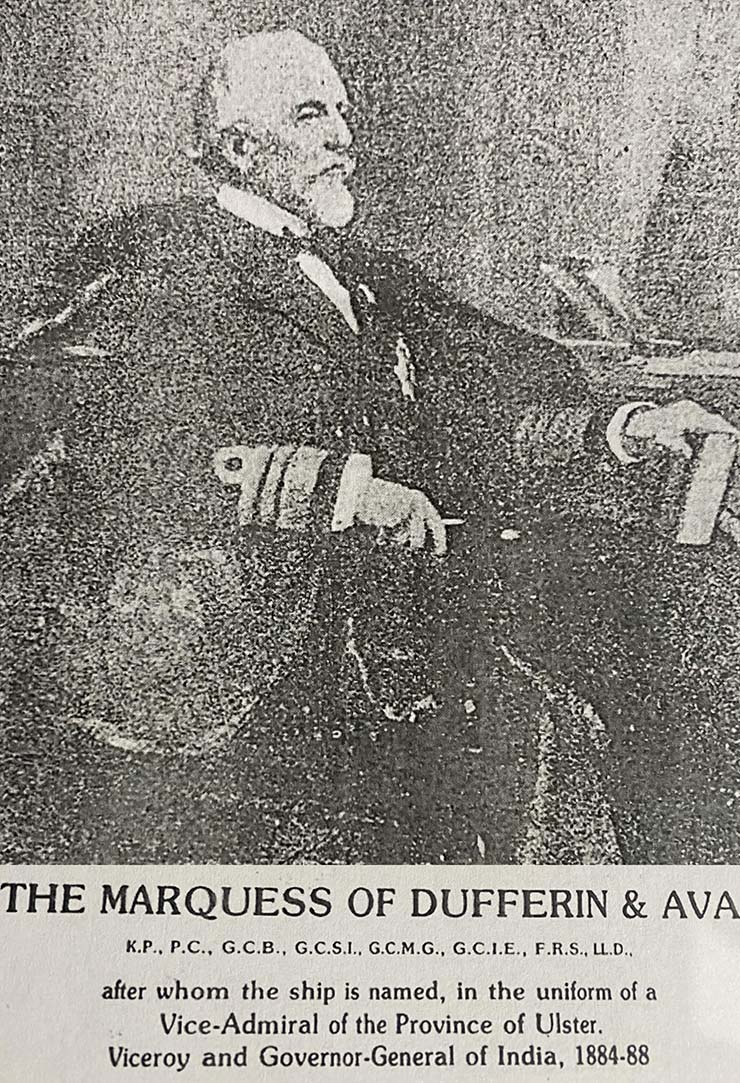
Maritime power in India dates back to centuries. The Cholas employed naval power to extend their influence overseas. The Zamorins under Marakkar during 15th century, and the Maratha Navy during the 17th and 18th centuries especially under Maratha Emperor Chhatrapati Shivaji, the ‘Father of India’s Navy’, fought rival powers and the European trading companies till the East India Company formed the Bombay Marine.
We need to remember the roles of TS Dufferin and the Ex Royal Navy officers who trained Indian master mariners between 1927 and 1950 and provided the first officers for the fledging Royal Indian Navy (RIN) with three years of rounded training based on the high British standards as India celebrates 75 years of independence. In recent times, contribution of Admiral SM Nanda, as the architect of Navy’s actions in the 1971 War, and of Soviet Admiral Sergie Gorshkov to supply nuclear submarines and building technology, deserve special mention for taking Indian Navy to great heights.
The History of Indian Navy
After the 1857 mutiny, the British Crown renamed the Bombay Marine as ‘His Majesty’s Indian Navy (HMIN)’ and, later ‘Her Majesty’s Indian Marine (RIM)’. A few thousand Indian lascars, tindals, and stokers in coal fired British ships participated in World War I (1914-18) and earned the prefix ‘Royal Indian Navy’ in 1934 with headquarters in Bombay in Castle Barracks, now INS Angre.
In recent times, contribution of Admiral SM Nanda, as the architect of Navy’s actions in the 1971 War, and of Soviet Admiral Sergie Gorshkov to supply nuclear submarines and building technology, deserve special mention for taking Indian Navy to great heights
After the victory in WW1, British mercantile trade and passenger ships plying to Australia, China and Hong Kong increased and a need was felt for ab-initio training of Merchant and Naval officers. Sir P S Sivaswamy Iyer passed the resolution in the Indian Legislative Assembly and a committee was formed on 3rd February 1923, under Captain EJ Headlam RIM. Indians on the committee included Samaldas, Jadu Nath Roy of the National Chamber of Commerce, Narottam Morarji Esq who went on to set up Scindia Navigation and M A Master Esq BA LLB.

The 7,000 tonne Troop Carrier Dufferin, named after Lord Dufferin, a former Viceroy of India, was built by Vickers in Burrow on Furnace in 1905. It was operated by the RIM since 1910 to transport upto 1500 troops or 700 families to South East Asia, to the United Kingdom and overseas. In 1927 it was chosen to train sea going Indian officers as a moored ship at Mazagon in Bombay.
It is recorded that in 1913 before the war, Dufferin was manned by 16 tindals and 81 stokers, and carried the famed Indian Army’s Central Indian Horse (CIH) from Bushire under the command of Field Marshal Birdwood’s brother. Dufferin was also used as a flagship for the Admirals, and Prince of Wales (later King Edward VII) who arrived in Bombay in HMS Renown in 1921, flew his standard on Dufferin on a visit to Rangoon from Calcutta. Lord Louis Mountbatten MVO RN was his ADC. Lt Digby-Beste served on board and was selected as the Captain Superintendent of Dufferin.

Dufferin trained a total of 2,656 (1927-1972) officers and the toppers of every course were offered commissions in the Royal Indian Navy and over 49 researched by this writer with Merchant Navy. Capt K Jayaram Ex Dufferin (1960-62), Roll No. 1788 from records, joined the RIN and served with distinction. TS Dufferin served till 15th April, 1972 when Mrs Indira Gandhi inaugurated TS Rajendra built by Hindustan Shipyard Ltd (HSL) Vishakhapatnam.
 It is said a ship is as strong as its keel, and is as stable as its centre of gravity and buoyancy for roll and pitch. So, a Navy’s keel is as strong as its trainers and pioneers. Indian officers were trained by former Royal Navy officers and superintendents Captains Digby B’este (1927-1937), RCC Clements(1937-1943), RAH Connell(1944-45), and MFSC Harvey (1945-1962). Captain DG Hazari, an Ex Dufferin officer, took over in 1962.
It is said a ship is as strong as its keel, and is as stable as its centre of gravity and buoyancy for roll and pitch. So, a Navy’s keel is as strong as its trainers and pioneers. Indian officers were trained by former Royal Navy officers and superintendents Captains Digby B’este (1927-1937), RCC Clements(1937-1943), RAH Connell(1944-45), and MFSC Harvey (1945-1962). Captain DG Hazari, an Ex Dufferin officer, took over in 1962.
Indian Navy’s pedigree and traditions are adapted from the Royal Navy that ruled a large Dominion from Whitehall in London from 1675 to 1950. The RIN formed on 2nd October 1934, rapidly expanded to take part in the WWII with glory in the East with British and Indian officers and men, and got dubbed the ‘Royal Navy’s Daughter Navy’, documented in the book ‘Timeless Wake’ by Commodore Johnsom Odakkal. RIN was India’s senior service till 1950 when it was renamed the Indian Navy when India became a Republic and Army became the senior service.
Between 1932 and 1945, TS Dufferin provided hard core officers with three years training which included elocution, boxing, boat pulling and debates competing with colleges in Bombay, besides seamanship and navigation to join ships and take part in World War II. That is why this writer contends that Dufferin needs to be remembered as Indian Navy’s and Merchant Navy’s alma mater along with some distinguished naval officers who were its keel.
TS Dufferin made her final voyage to the ship breaker’s yard at Darukhana Bombay on February 2nd 1976. Dufferin may not exist today in steel and timber, but in the minds of thousands of her ex-cadets and well-wishers, ‘there will always be a Dufferin as India’s maritime power is on the rise on a strong keel’
From the initial batches from 1930 Admiral Ramdas Katari, Roll No. 1 (CNS 1958-62) and BS Soman, Roll No. 48 (CNS 1962-66) served as Chiefs, and by 1945, eighteen who served in the war later became illustrious Admirals. They were SG Karmarkar MBE, Roll No. 6; BS Baswani, Roll No. 43; BA Samton and many left the Navy and could not locate; A Chakraverti, Roll No. 65; Jai Shankar, Roll No. 150; N Krishnan DSC, Roll No 233; BA Samson, Roll No, 287; VA Kamath, Roll No. 295; Inder Singh, Roll No. 318; SH Sarma, Roll No. 344; KL Kulkarni, Roll No. 316; JTG Periera, Roll No. 431; SC Kapadia, Roll No. 442; Kirpal Singh, Roll No. 465; EJ Kuruvilla, Roll No. 480; RKS Ghandhi, Roll No. 572, and MP Awati, Roll No. 638. Many others rose to train new comers and command ships and establishments. Admiral JG Nadkarni of the Roll No. 774 of the 1946-48 batch became Chief of Naval Staff (1987-90), and direct entry officers increased with fewer Dufferin officers.
Summing up
In 1952 when the “Dufferin” celebrated its Silver Jubilee, a tribute was paid by no less a person than the late Prime Minister Jawaharlal Nehru, “Looking at the lady, I see she has stayed remarkably young and fit. I have no doubt that she will have many years of good service and good looks before her”.

Efforts to convert Dufferin into a maritime museum failed due to the high cost of ‘beaching’ and maintenance. Hence Dufferin which nurtured India’s glorious maritime traditions with naval officers and master mariners of world class had to be consigned to the scrapyard. The ship purchased for Rs 1.25 lakh in 1927, was sold for Rs 27 lakh as scrap. With the ‘Rajendra’ staff and cadets, TS Dufferin made her final voyage to the ship breaker’s yard at Darukhana Bombay on February 2nd 1976. Dufferin may not exist today in steel and timber, but in the minds of thousands of her ex-cadets and well-wishers, ‘there will always be a Dufferin as India’s maritime power is on the rise on a strong keel.’
(The writer has penned ‘Warring Nuclear Nations – India and Pakistan’ ISBN 978-93-5158-638-0 and curates a Maritime Museum at C-443, Defence Colony, New Delhi, open to public for free.)








